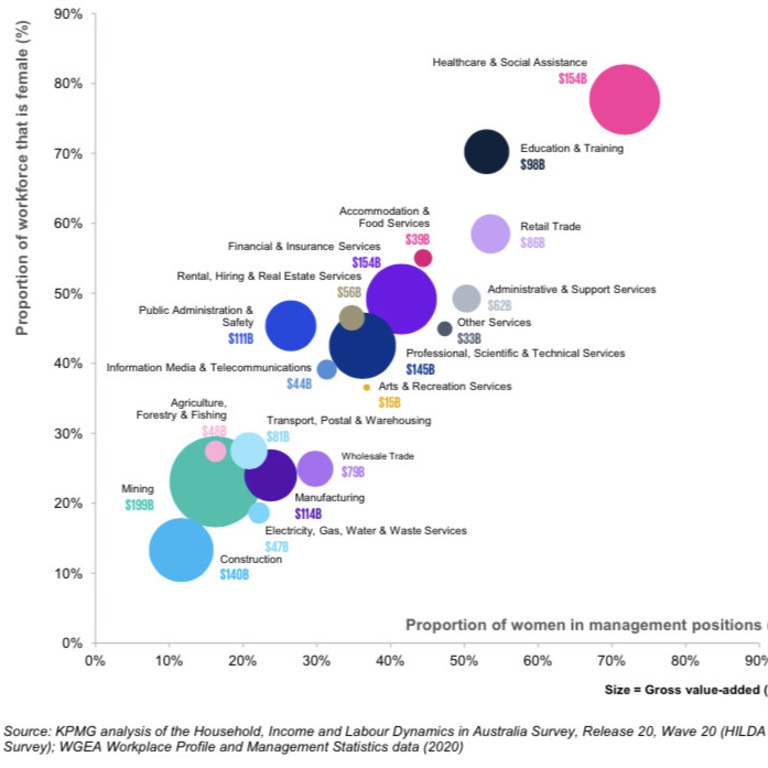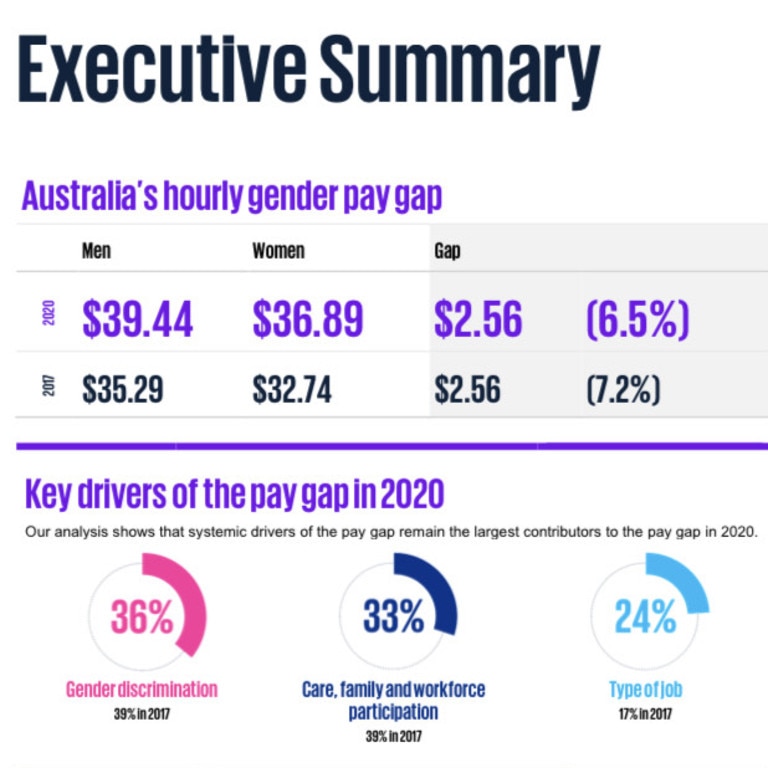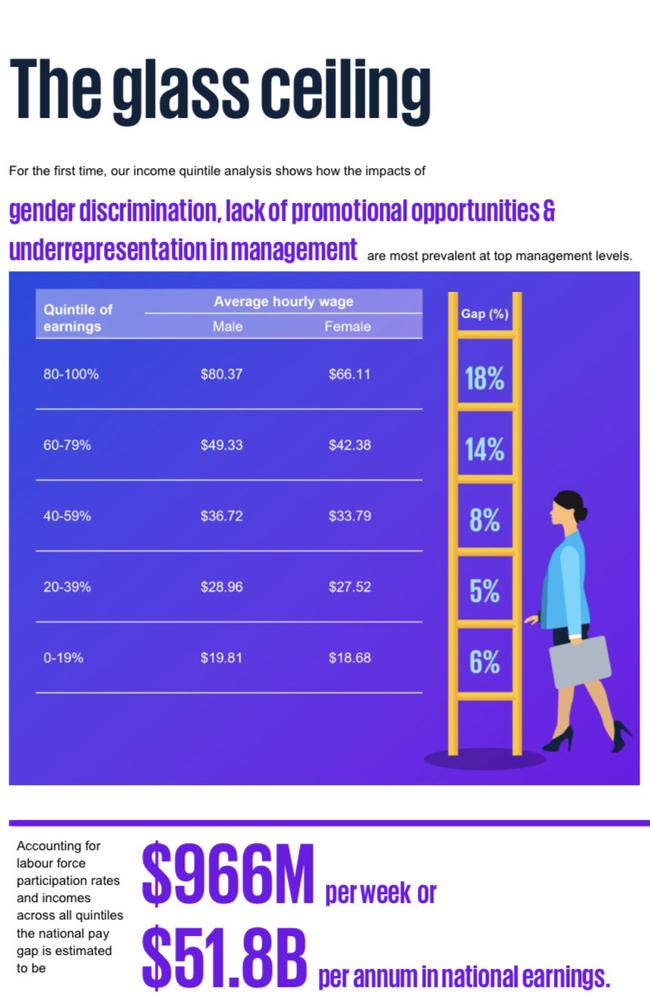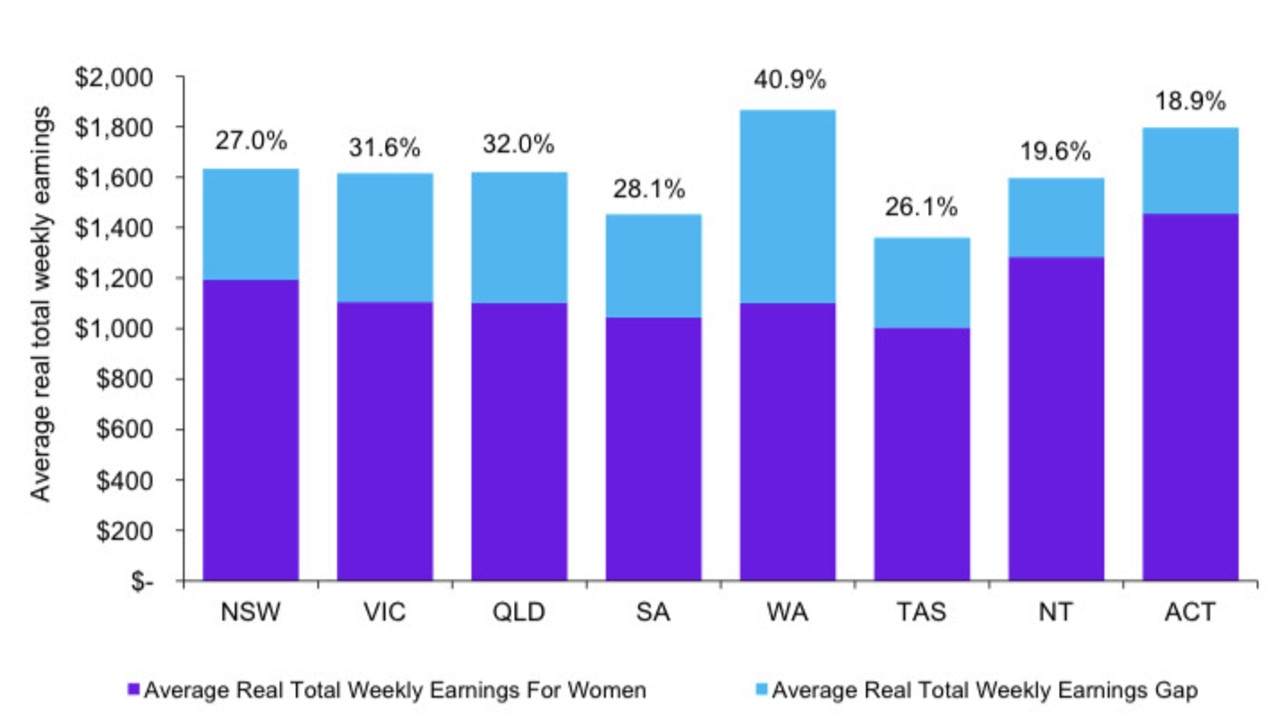Australia’s gender pay gap nears $1b per week, with discrimination the main driver
A new report has found the key driver of Australia’s massive gender pay gap is blatant discrimination, quashing the argument of career choice and children.
Women are being ripped off and short-changed at work and the biggest driver of the $1 billion-a-week gender pay gap is good old-fashioned discrimination.
That’s the conclusion that a landmark report has arrived at after breaking down for the first time the reasons why women are being paid an average of $2.55 less an hour than men.
For years, the reasons for the pay gap in Australia have been speculated about with anecdotal claims that women taking time out of the workforce to have kids or a preference for working part-time is the reason men earn more.
But the new report has found a big chunk of the pay difference has no legitimate reason.
That’s why researchers say there’s no other explanation other than discrimination.
Want a streaming service dedicated to news? Flash lets you stream 25+ news channels in 1 place. New to Flash? Try 1 month free. Offer ends 31 October, 2022 >

In 2020, women were paid an average of $36.89 an hour, compared to $39.44 for men – a gap that increased during the pandemic.
And while it’s true that taking time off work to have children is a contributing factor, it’s not the only driver of the pay gap.
A breakdown of the $2.55 hourly pay gap estimates that 51 cents of the hourly pay gap could be explained by women tending to take more time away from paid work to raise children.
Another 27 cents up is as a result of more women working part-time and another 50 cents was attributed to different types of work favoured by women.
In other words, women working in lower-paying jobs such as nursing or teachers rather than the mining industry.

According to the report, 91 cents of the hourly pay gap – or 36 per cent – cannot be explained using measurable data. As a result, the report’s authors to put a big chunk of the pay gap down to gender discrimination.
The new research released today by KPMG, Diversity Council Australia (DCA), and the Workplace Gender Equality Agency (WGEA) has found that the national pay gap is estimated at $966m per week or $51.8b per year.
“Australian women are among the most educated in the world. Yet despite many years of higher educational attainment than men, and women working more than ever, the gap between women’s and men’s earnings hasn’t significantly budged,’’ said Lisa Annese CEO Diversity Council Australia
“This latest report shows that discrimination against women remains the single biggest driver of the gender pay gap, followed by the combined impact of family, unpaid care and time out of the workforce. Women’s overrepresentation in certain industries and occupations also continues to be a significant driver of the pay gap and for the first time in this series, this report includes analyses of the gender pay gap by industry and income quintiles.”


Other key pay gap drivers are caring for family and workforce participation (33 per cent) and the type of job and industry sector of employment (24 per cent).
One of the biggest things companies can do to close the gender pay gap is offer greater transparency on the pay gap within organisations.
That means undertaking gender pay gap audits and analysis and publishing the findings.
“Actions employers can take today include undertaking gender pay gap audits and actioning findings, increasing the share of women in leadership positions, and enhancing availability and uptake of parental leave and flexible work by men and women,’’ said Mary Wooldridge the Mary Wooldridge, Director Workplace Gender Equality Agency (WGEA),
As women progress in their careers, the shock research finds the pay gaps actually gets worse.
It reveals that women at the start of their career experience a pay gap of 6 per cent but as they progress through their careers to top management levels, the pay gap increases to a high of 18 per cent among the top 20 per cent of salaried workers.






